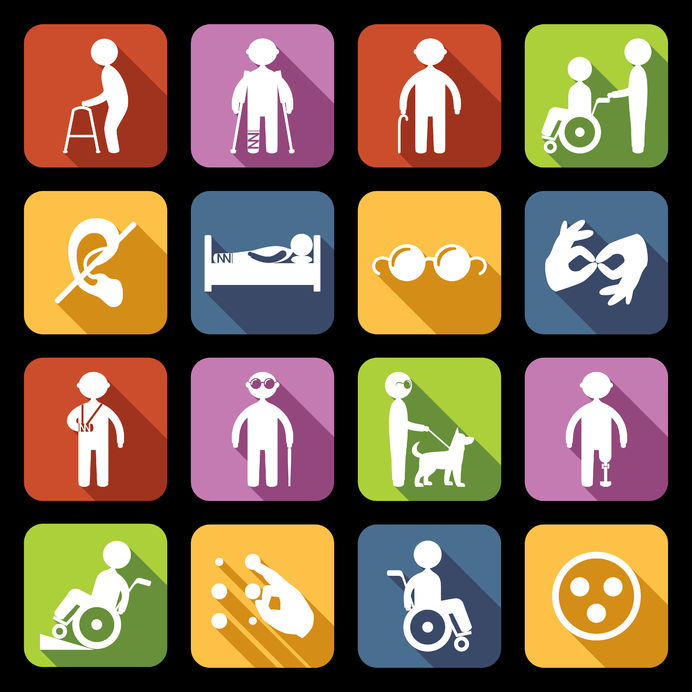by Nancy Swenson, Kathleen Bastedo
While no course will ever be 100 percent accessible, it is important to have plans in place to address accommodation issues as they arise.
Overview

In the spring of 2020, institutions had to transform courses quickly and efficiently from various modalities (e.g., face-to-face, blended) to other types of online course modalities (e.g., completely online, video lecture, BlendFlex). Accessibility of online course materials and tools may not have been high on everyone’s list of priorities due to time constraints in the accelerated move to online. Now that the dust has settled, it is important for institutions to make sure faculty have the training and tools/materials needed to be successful teaching in these new online modalities. This move has also increased student accessibility needs making it is also important to develop a partnership with your institution’s accessibility services department. This article discusses some of the tools available to increase online course accessibility and the importance of developing partnerships across campus to assist when accommodations are needed.
Tools to Improve Online Course Accessibility
Accessibility needs should always be considered up front when considering using new technology. For example, if a professor has heard about a particular webinar product to present/record live lectures and decides he or she would like to test it out – without considering accessibility needs up front – the product may work fine for a class that lacks any students who have accessibility needs. However, if in a semester or two a student with a hearing impairment signs up for class, the instructor will have to scramble to see if a captioner can be added to the live lecture, how to go about it, if captions can be added to already recorded lectures etc.
It would be easier to begin with a product that already has these accessibility features instead of trying to retrofit the course. For example, there are many comparison charts already available on the web regarding technology, materials, and links. Towson State College provides their institution with a webinar platform chart that also contains information on a VPAT. A VPAT is a Voluntary Product Accessibility Template that reflects how a product conforms with the Section 508 of the US Rehabilitation Act of 1973 accessibility related law. If you have a product or two in mind, it is recommended that you search the product’s website to see if it has a VPAT but also to see if the accessibility features make it a viable product.

The University of Central Florida (UCF) has been using Canvas as its learning management system for several years, as have many of the other state universities in Florida. Canvas has added an Accessibility Checker that can be used to check basic accessibility features of content being created such as checking for good color contrast, table headers, and table captions as you create Canvas course pages. In addition our Center for Distributed Learning (CDL) department created tools such as UDOIT and the Quiz Extensions tool. UDOIT enables faculty to identify accessibility issues in Canvas courses. It has the ability to scan a course, generate a report, and provide resources on how to address and fix common accessibility issues such as the lack of alternative text, use of poor color contrast, or missing table headers. UDOIT is free for use not only at UCF, but also at any institution that uses Canvas by Instructure. Visit our UDOIT page to learn more about how you can add UDOIT to your courses.
The Quiz Extension Tool is an LTI for Canvas also built by one of our CDL teams. It allows an instructor the ability to easily apply extra time for students who are allowed extended time to take an online quiz or exam to all created quizzes at one time. The time is based on percentages with a default of time and a half (150%). Quiz extensions do not automatically extend the availability dates of the quiz. Visit our Quiz Extensions webpage for more information. In addition our Quiz Extensions LTI is open source under the MIT license and is available on Github: https://github.com/ucfopen/quiz-extensions.
Adding various various multimedia, especially YouTube videos to online courses has become very popular in recent years. What is not always considered is creating or selecting videos with appropriate captions. When linking to third-party video clips, check for accessibility. If the video is set up with auto-generated captions, then it does not meet accessibility standards according to the 21st Century Communications and Video Accessibility Act (CVAA).
To help address concerns of YouTube videos that are not captioned, CDL developed a Proactive Captioning Project. The project allows faculty to submit an application to have their YouTube videos captioned at no cost to them or their department. Consider investigating the possibility of creating your own Proactive Captioning Project. We were granted 10,000 minutes from the Distance Learning Fee and tasked to create a ProActive Captioning Program to address fully online courses only. We set up a webpage with a link to a faculty questionnaire, reviewed their courses for eligible videos, captioned the eligible videos using AblePlayer, and uploaded the newly captioned videos into their courses. Due to the success of the program, we have been granted another 10,000 minutes for captioning third-party videos for online courses for the next fiscal year.
Successful Partnerships for Online Course Accessibility
Partnerships with your institutions accessibility services are key in supporting the accessibility needs of students taking online courses. Whichever department at your institution that supports online courses (e.g., faculty center, instructional designers, distance learning department) and faculty will want to partner with the student accessibility office. Together, the offices involved will need to develop a plan and processes to meet the needs of students with accessibility needs taking online courses.
At UCF there is a partnership between the Student Accessibility Services Office and CDL. When a student requires accommodations with their online course, the two departments work together to review courses and make the content accessible. When this partnership was formed roles were defined and duties divided between the two units. (For example, when there are videos in online courses that need to be captioned, Student Accessibility Services will create the caption file and CDL will caption the video.) To make sure the processes are still working and going smoothly there are frequent communications and check-ins between the two departments.
Some things to consider when developing a plan are:
- What types of accommodations are needed in the online environment?
- Captioning
- Extended time on tests
- Online content to be made accessible – images, tables, etc.
- Who will be responsible for making sure the content is made accessible when it is not and what is the process for doing so?
- Faculty member
- Distance Learning Office
- Faculty’s department
- Student Accessibility Services Office
- What is the process and timeline for making inaccessible content accessible?
- What is the process for a student to request assistance when they have content that is not accessible to them?
- Does the student contact the faculty member?
- Does the student contact the Student Accessibility Services Office?
- Where does a faculty member turn if they need assistance with making their content accessible?
- Is there a department or person on campus who will assist a faculty with making their content accessible?
Conclusion
Spring 2020 has been difficult for everyone who has had to move all courses into the online format that were not originally set up to do so. As institutions move forward, it is important to incorporate plans for accessibility of these online courses. As courses are created and/or retrofitted, we hope the tools mentioned in this article will be helpful. No course will ever be 100 percent accessible, yet it is important to have plans in place to address accommodation issues as they arise. Having partnerships between the offices working with the design and development of online courses and the accessibility services office and having processes in place is key to making sure our students’ needs are met in an efficient and timely manner.
Resources/References
EDUCAUSE: https://er.educause.edu/blogs/2018/9/online-course-accessibility-to-benefit-everyone?utm_source=Informz&utm_medium=Email&utm_campaign=ER#_zsPduoe1_zlPKaD5 September 28, 2018
National Deaf Center (NDC): Remember Accessibility in the Rush to Online Instructions:10 Tips for Educators: https://www.nationaldeafcenter.org/news/remember-accessibility-rush-online-instruction-10-tips-educators
Inside Higher Education: Accessibility Suffers During Pandemic: https://www.insidehighered.com/news/2020/04/06/remote-learning-shift-leaves-students-disabilities-behind